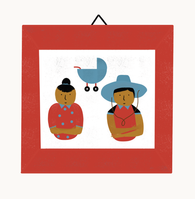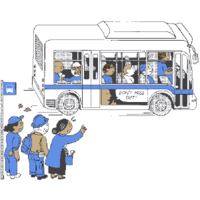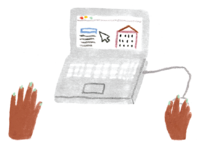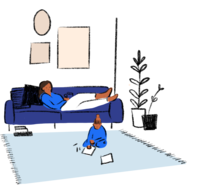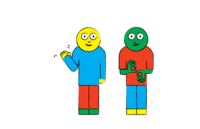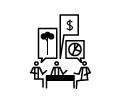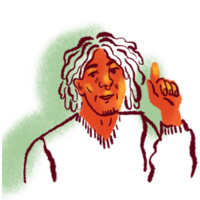2015
‘How Can You Get an Ethical Manicure? Support Worker Organizing’
The Nation
May, 11, 2015
On the workers’ side, the Nepali community organization Adhikaar just published a colorful pamphlet—designed in collaboration with the Center for Urban Pedagogy—to educate communities about both public-health and labor-rights issues in the sector. The cartoon graphics, designed for accessibility, present general advice on workplace hygiene, health and safety, guidance on labor laws for workers, and advice for customers (“Be generous—tip at least 20%”).
‘Governor Cuomo Orders Inspections of New York Nail Salons’
The Village Voice
May, 11, 2015
Partnering with the Center for Urban Pedagogy, Adhikaar has created a poster for salon owners to display in their places of business. With text in English, Chinese, Nepali, Spanish, and Korean, the poster includes health and safety information for both workers and patrons.
‘監管紐約美甲店 市議會討論評級 (City Council Discusses Rating System for Nail Salon Inspections)’
New Tang Dynasty Television
May, 2, 2015
Healthy Salons For All is featured in a video report by New Tang Dynasty Television!
‘A Roadmap to Welfare in New York’
City Limits
April, 30, 2015
It’s also a complicated system, and that’s why the Safety Net Project of the Urban Justice Center, working with the Center for Urban Pedagogy, released on Thursday “Your Guide to Welfare,” which walks the reader through the system: who it’s for, what it does and how to access it.
‘This Might Be the Most Important Handout Needy New Yorkers Need’
Next City
April, 30, 2015
She adds that this poster is another way for public assistance recipients to be treated in a dignified way, respectful of the fact that these are benefits they are entitled to: “One of the goals of the poster and of this whole campaign is to let people know that there is a real possibility that there are programs out there that might be able to help them in their day-to-day survival for their family.”
‘New Guide to Public Assistance Aims to Help Neediest Navigate System’
Gotham Gazette
April, 30, 2015
The guide was created over the last year through feedback from recipients of public benefits and advocacy groups. The city’s Human Resources Administration (HRA) also helped review the poster drafts and its commissioner, Steve Banks, was at Thursday’s launch event.
‘All of This Belongs to You, V&A, London — review’
The Financial Times
April, 8, 2015
“Vendor Power” is an easy-to-read document outlining the rights of street vendors in New York, a simple effort to help them in their confrontations with officials who might want to move them on or impose fines. It was developed by the Centre for Urban Pedagogy, a non-profit coalition of architects, designers and artists, and its intention is to make urban life better — not for the creative classes but for the struggling immigrants and budding entrepreneurs who operate the city’s food carts.
‘Walking the Walk: Putting Equity Into Practice’
Impact Design Hub
March, 25, 2015
It’s challenging to build and maintain a practice in the social impact design space. Addressing pipeline, diversity, staffing, and financial issues is a heavy load, but our work won’t really be design for equity until we take on these issues and make sure our own internal practices are consistent with our values and the larger social equity goals we are fighting for.
‘Using Our Words: The Language of Design for Equity’
Impact Design Hub
March, 4, 2015
We all say things like we want our project to “benefit the community,” we are “interested in diversity,” or we have an “engagement process.” But a little poking reveals that we often have different definitions for seemingly simple words like “community,” “diversity,” and “engagement.”
